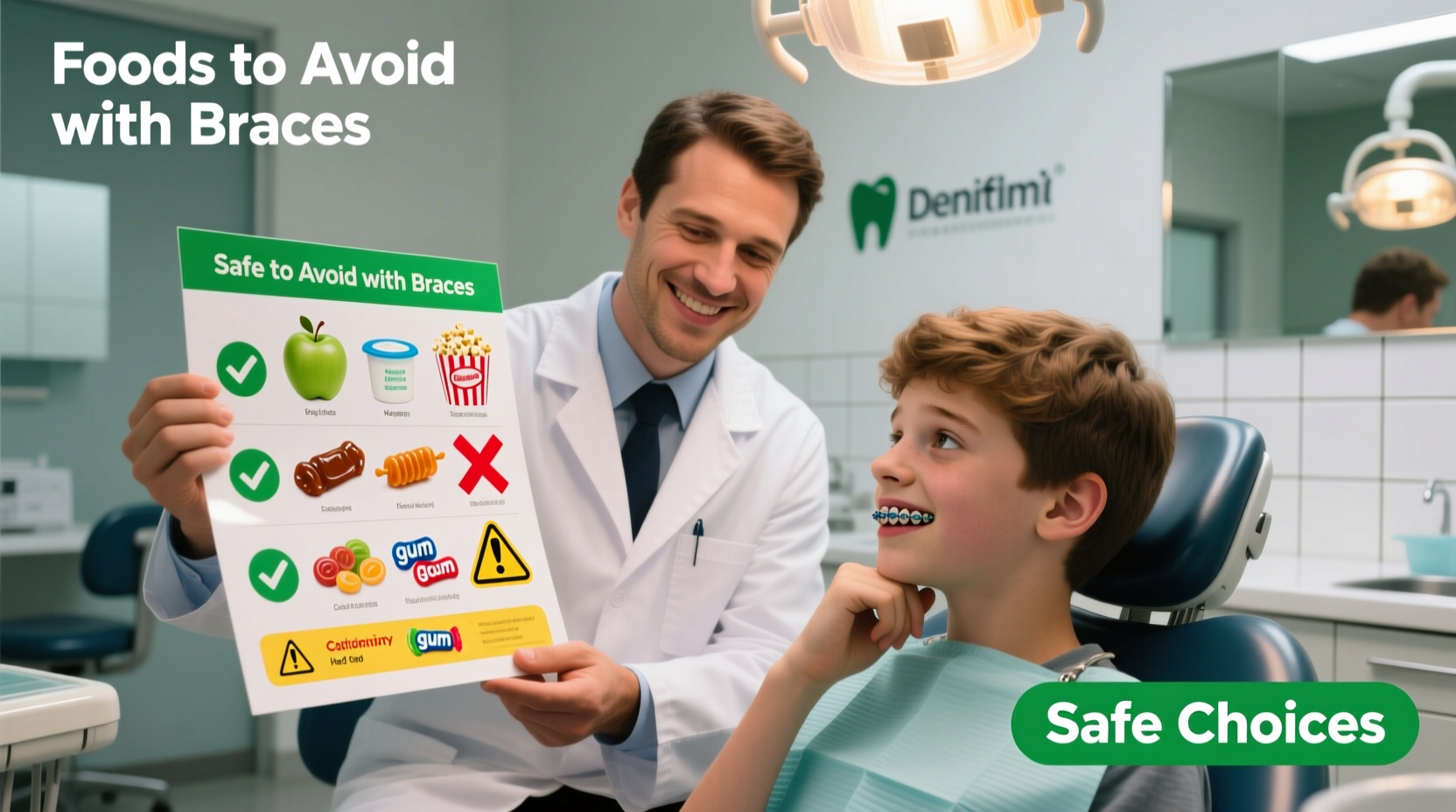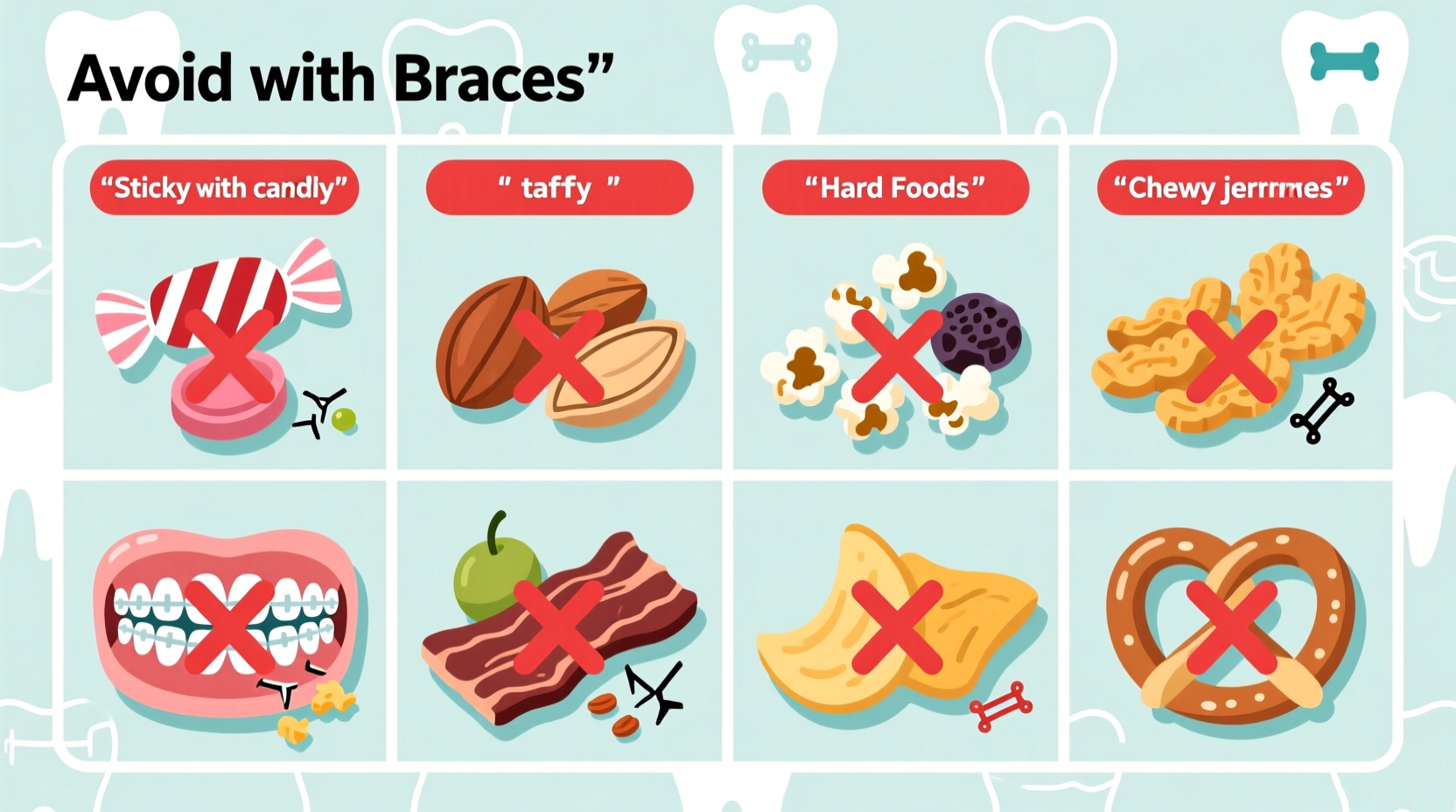Getting braces is an exciting step toward a straighter smile, but it comes with important dietary adjustments. Choosing the wrong foods can lead to broken brackets, painful emergencies, and extended treatment time. As an orthodontic patient, knowing exactly what to avoid—and when—can save you from unnecessary discomfort and keep your treatment on track.
Why Food Choices Matter with Braces
Braces create additional surfaces where food can get trapped, increasing your risk of tooth decay and gum disease. More critically, certain foods exert excessive force on brackets and wires, causing damage that requires emergency visits and prolongs your treatment. According to the American Association of Orthodontists, dietary noncompliance accounts for nearly 60% of all orthodontic emergencies.

Immediate Risks of Eating the Wrong Foods
Consuming prohibited foods can cause several problems:
- Broken brackets - Requiring emergency appointments and potentially extending treatment
- Bent wires - Causing discomfort and misalignment
- Food impaction - Leading to plaque buildup and cavities around brackets
- Increased pain - Especially during the first week when teeth are most sensitive
Complete Guide to Foods to Avoid with Braces
| Food Category | High-Risk Foods | Why to Avoid | Safe Alternatives |
|---|---|---|---|
| Hard Foods | Nuts, hard candies, ice, corn chips | Exert 5-10x normal biting force on brackets | Smooth nut butters, soft-baked goods, pita bread |
| Sticky Foods | Caramel, gum, gummy candies, taffy | Pull brackets off teeth when chewed | Sugar-free mints, soft chocolate, pudding |
| Crunchy Foods | Popcorn, raw carrots, apples, pretzels | Can snap wires or dislodge brackets | Cooked vegetables, applesauce, soft fruits |
| Foods Requiring Front Biting | Corn on cob, sandwiches, burgers | Put excessive pressure on front brackets | Cut food into small pieces, remove corn from cob |
| High-Sugar Foods | Soda, sugary coffee, sports drinks | Promote plaque buildup around brackets | Water, milk, sugar-free drinks |
Braces Dietary Timeline: What to Eat When
Your dietary restrictions change as you adjust to braces. Follow this evidence-based timeline from the American Dental Association to minimize discomfort and prevent damage:
First 3-7 Days: Maximum Sensitivity Period
During this critical adjustment phase, stick exclusively to:
- Smoothies and protein shakes
- Mashed potatoes and sweet potatoes
- Yogurt and pudding
- Scrambled eggs
- Soft-cooked pasta
Avoid anything requiring chewing. This reduces pressure on newly placed brackets when they're most vulnerable.
Weeks 2-4: Gradual Introduction Phase
As discomfort decreases, you can slowly add:
- Soft-cooked vegetables (zucchini, spinach)
- Cut-up soft fruits (bananas, melons)
- Thinly sliced deli meats
- Soft breads like pancakes or muffins
Continue avoiding all hard, sticky, and crunchy foods. Cut food into small pieces and chew with back teeth.
Month 2+ and Ongoing: Maintenance Phase
While you'll feel more comfortable, certain restrictions remain essential throughout treatment:
- Never eat hard candies or chew ice
- Avoid sticky candies completely
- Continue cutting apples and corn off the cob
- Be cautious with chewy breads like bagels
Remember that even experienced brace-wearers cause damage by getting careless with food choices. Consistent adherence to dietary guidelines prevents treatment extensions averaging 3-6 months.
Special Considerations for Different Brace Types
Your specific orthodontic appliances affect which foods pose the greatest risk:
- Traditional metal braces: Most vulnerable to hard and sticky foods
- Ceramic braces: More prone to staining from dark-colored foods and drinks
- Lingual braces: Less affected by food texture but more sensitive to hard foods causing wire displacement
- Invisalign: Can remove aligners for eating, but must avoid sugary drinks while wearing them
Always follow your orthodontist's specific recommendations, as individual treatment plans may have unique restrictions.
Emergency Food Situations: What to Do
If you accidentally eat something that damages your braces:
Broken Bracket
Save the bracket if possible and cover it with orthodontic wax. Eat only soft foods until you can see your orthodontist. Most practices offer same-day emergency appointments for brace damage.
Protruding Wire
Use the eraser end of a pencil to gently push the wire away from irritated tissue. Apply orthodontic wax to the end. If causing significant discomfort, contact your orthodontist for an adjustment.
General Soreness After Eating
Rinse with warm salt water and take over-the-counter pain medication as directed. Stick to soft foods for 24-48 hours to allow tissues to recover.
Practical Tips for Dining Out with Braces
Eating at restaurants doesn't have to be stressful. Follow these strategies:
- Ask for dressings and sauces on the side to control texture
- Request proteins to be cut into small pieces before cooking
- Choose soft tacos instead of crunchy shells
- Opt for pasta dishes with softer ingredients like mushrooms instead of sausage
- Bring orthodontic wax in case of emergencies
Building a Braces-Friendly Meal Plan
Planning ahead prevents dietary mistakes. Create weekly menus featuring:
- Breakfast: Overnight oats, smoothies, or scrambled eggs
- Lunch: Pasta salad, tuna salad, or soft vegetable soup
- Dinner: Baked fish with soft-cooked vegetables, soft tacos
- Snacks: Yogurt, pudding, soft fruit
Batch cooking soft meals at the start of the week ensures you always have safe options available, reducing temptation to eat problematic foods when hungry.
When Dietary Restrictions End
Only your orthodontist can determine when you've completed treatment and can return to normal eating. Even after braces removal, you'll wear retainers that require some dietary caution during the first few months. Follow your orthodontist's specific post-treatment guidelines to maintain your beautiful new smile.











 浙公网安备
33010002000092号
浙公网安备
33010002000092号 浙B2-20120091-4
浙B2-20120091-4